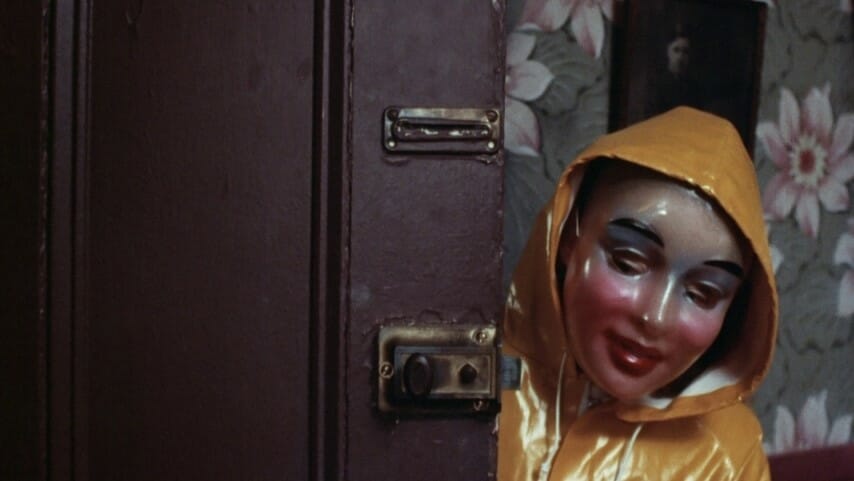
Paste’s ABCs of Horror is a 26-day project that highlights some of our favorite horror films from each letter of the alphabet. The only criteria: The films chosen can’t have been used in last year’s Century of Terror, a 100-day project to choose the best horror film of every year from 1920-2019. With some heavy hitters out of the way, which movies will we choose?
The four years between 1974’s Black Christmas and 1978’s Halloween are an interesting, unorthodox time period for horror films, especially in the nascent slasher genre. All of the pieces are on the table by this point, and the first “true” slasher film has already arrived—our in-depth examination and definition of the genre pinpoints it as 1973 Italian slasher Torso—but the tropes of that genre haven’t yet become so widely recognized and ubiquitous that they’re inescapable, as they are after Halloween and Friday the 13th. This is an era of more oddball, hard to categorize horror features in the slasher arcana, often tinged with grungy ‘70s exploitation vibes, whether you’re talking about 1976’s The Town That Dreaded Sundown or today’s film: Alice, Sweet Alice.
This is anything but a conventional slasher movie. Indeed, it is marked by its distinct attachment to certain, specific iconography, most notably that of the Catholic church. The film’s original title, Communion, is its most apt one—this is a story where the foreign nature of Catholic dogma to white, Protestant America is given an alien sense of menace. It’s not the the film is taking aim at the church itself, per se, but more the tradition and repression it inherently represents. It’s a story of old values and morals, clashing with what the zealots would see as modern “degradation” of those values. But it’s also suffused with a powerful sense of human misery; a misanthropy that might put you in the mind of something like Henry: Portrait of a Serial Killer. Suffice to say, Alice, Sweet Alice is not a cheerful film, but it is an effective one.
The title character is Alice (Paula Sheppard), a 12-year-old girl who faces the world with a particularly churlish, bitter attitude, but with good reason. Born out of wedlock to a now-divorced mother, she has been systematically denied love and empathy throughout her young life, forced to watch that affection consistently applied to her younger sister Karen (played by a young Brooke Shields in her first role), who had the good fortune to be born at the correct time. When Karen is brutally murdered during her first Communion service, however, Alice falls under suspicion, which only deepens as a series of stabbings is conducted by a mysterious, feminine figure in a mask and yellow rain slicker. Visually, that slicker clearly evokes the killer in Nicolas Roeg’s Don’t Look Now, although it’s also practically identical to the quasi-slasher TV movie Home For the Holidays from 1972.
Alice, Sweet Alice unfolds in a fashion that veers between beats recognizable as “slasher” and material that hews closer to Italian giallo films, and like the latter it seems to have a pretty low opinion of humanity. One might view it as an inspiration for 1995’s Seven, in which sinners are punished in accordance with Catholic dogma in the form of the seven deadly sins, but Alice, Sweet Alice is much more intensely inundated with godly imagery. It litters the background of nearly every scene with a false sheen of ornateness, often juxtaposed with spiritual, moral or physical decay. Its slovenly characters, especially the lecherous Mr. Alphonso, are presented like the final stage of a civilization in decline.
The deaths, meanwhile, are filmed with a stark verisimilitude more common to the genre at the time, rather than the more cartoonish and comical violence that would follow in the heyday of the slasher genre in the early 1980s. These stabbings and strangulations are quick, brutal and to the point, not “sadistic” so much as they are frighteningly direct and impulsive. When all is said and done, they contribute to the gritty social critique that is Alice, Sweet Alice.
Originally released at the Chicago International Film Festival as Communion, the film was retitled Alice, Sweet Alice in its wide release in 1977. Perhaps less known is the fact that it was theatrically re-released again in 1981, this time under the name Holy Terror, in an effort to take advantage of Brooke Shields’ newfound Hollywood celebrity after The Blue Lagoon. Whatever the name, though, it remains one of the most idiosyncratic and chilling of the early slashers.
Jim Vorel is a Paste staff writer and resident horror guru. You can follow him on Twitter for more film and TV writing.